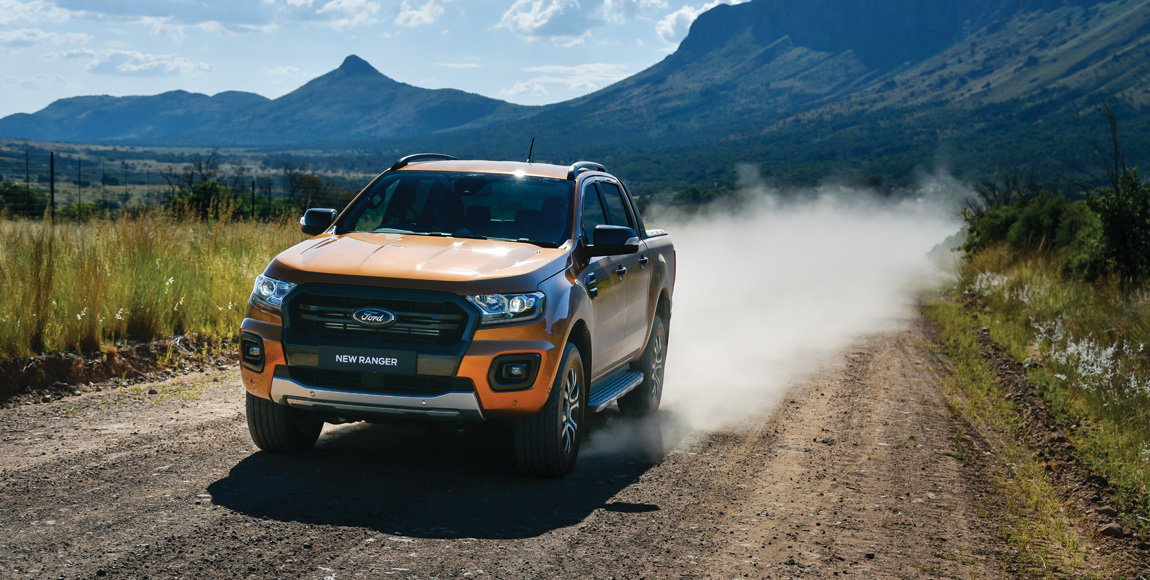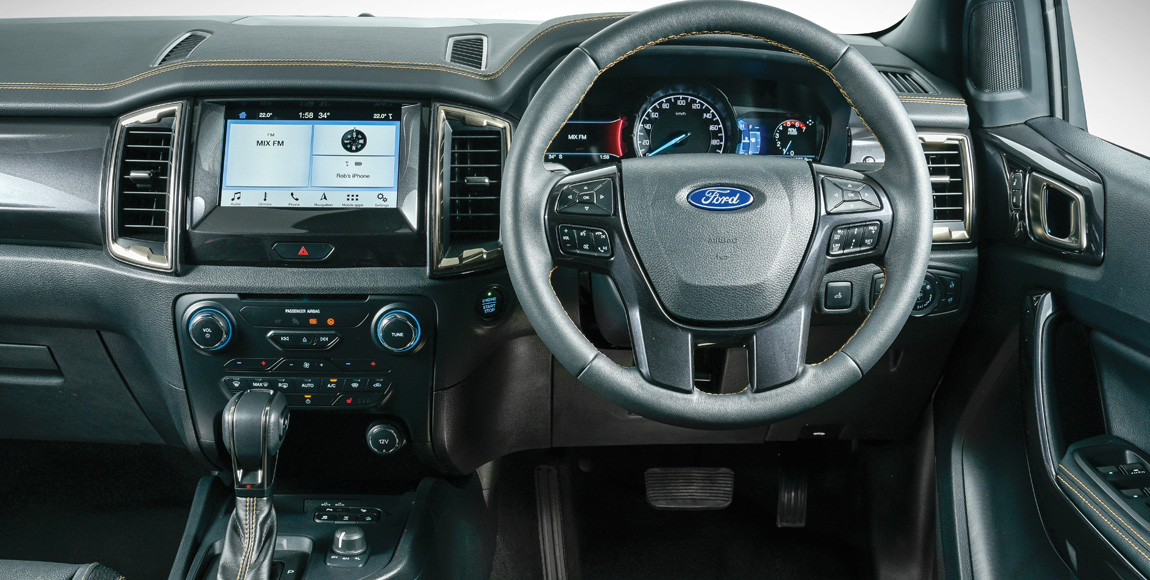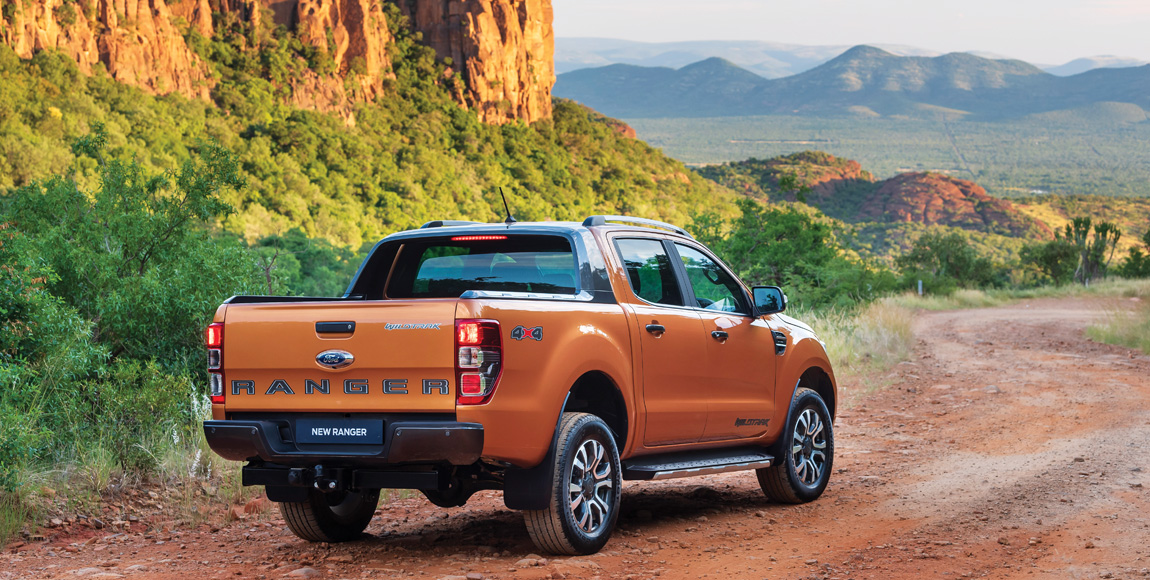Refined Wildtrak roars ahead

Ford’s latest Ranger Wildtrak impresses with its features and refinement
Sporting a number of engineering and cosmetic changes, Ford’s latest Ranger Wildtrak looks set to reinforce its position as a leading contender for top honours in South Africa’s bakkie stakes.
With a reputation for utility, versatility and durability having contributed to the previous version’s success in the sales charts, the model adds the option of a new engine and gearbox combination, updated technological features, styling upgrades and, thanks to modifications to its suspension system, SUV-like refinement to its ride.
In terms of latest technology, semi-automatic parallel-park assist is likely to prove popular. Adopted from the Wildtrak’s stablemate, the Everest, the system relies on ultrasonic sensors at the front and rear of the vehicle to identify parking spaces that are big enough to accommodate its size, automatically steering itself into place with the driver operating gears, accelerator and brake.

Other driver aids include adaptive cruise control with forward-collision alert, and lane-keeping assist with lane-keeping alert. Also, a keyless entry and start feature allows the driver to unlock the vehicle and start the engine without having to use the key.
Ford’s high-end SYNC 3 technology remains the cornerstone of the Wildtrak’s infotainment system. Linked to an eight-inch, touchscreen colour display, the system boasts fully featured navigation and responds to voice commands as well as to gestures such as swipe, slide and scroll. Smartphone integration is provided through Apple CarPlay or Android Auto.
The vehicle’s safety package is impressive, too, incorporating airbags, anti-lock brakes, electronic stability control, traction control, trailer sway control, hill-start assist, hill-descent control, adaptive load control and roll-over mitigation among its features.

Also new to the Wildtrak is an easy-lift tailgate, controlled by a torsion rod that is hinged to the vehicle’s body. Ford’s spokesmen claim it provides a 70-percent reduction in lift force, as well as operating as a damper, which controls the movement of the tailgate when it is opened.
Changes under the bonnet include an all-new, four-cylinder, 2,0-litre bi-turbo diesel plant mated to a sophisticated, 10-speed automatic gearbox – the powertrain fitted to the test vehicle. Though Wildtrak customers retain the option of the previous edition’s five-cylinder, 147 kW, 3,2-litre Duratorq TDCi engine, the new unit – which is similar to the one powering the high-performance Ranger Raptor – is likely to prove the powerplant of choice.
It’s quiet but powerful, smoother than its counterpart and more responsive thanks to its ability to produce 157 kW and 500 Nm – the latter figure about 30 Nm more than that delivered by the Duratorq engine. What’s more, coupled with the intelligent new gearbox, the unit is said to offer better fuel economy than the previous one.

The 10-speed transmission – similar to that fitted to Ford’s Mustang sports car – incorporates high-tech features such as real-time adaptive shift-scheduling, which enables optimal cogs to be selected for performance, fuel-efficiency or refinement. Gear changes are smooth and quick.
Additional innovations include Progressive Range Select (PRS) operated by a button, which locks out selected gears from the automatic shifting range – a useful tool when towing a caravan, boat or trailer, when driving in slippery conditions or climbing steep gradients.
The Wildtrak’s exterior styling appears to have been configured with a view to delivering an even more powerful presence on the road, the vehicle’s tough truck image reinforced at the front by a chiselled lower bumper underscored by a wide, lower grille; large fog-lamp bezels and a silver-accented skid plate.
Inside, the comfortable, car-like cabin has been neatly crafted, with switchgear falling readily to hand. Leather, polished surfaces and dark-satin chrome embellishments add appeal. Seats are embossed with Wildtrak graphics and, incidentally, have been restructured not only to look sportier than before, but, according to Ford’s spokesmen, to offer greater comfort.
In terms of ride quality, the Wildtrak appears to have benefited significantly from modifications to its suspension system, with the main changes being the relocation of the front stabiliser bar coupled with revised spring rates. According to Ford’s claims, the new set-up results in improved ride performance and better steering precision.
With the Wildtrak now feeling more like an SUV than a bakkie in terms of comfort – and the new powertrain heightening driver enjoyment – the model tends to raise the bar in South Africa’s bakkie stakes.
Published by
Focus on Transport
focusmagsa




